Which electric heating convector is better: how to buy a good one, so as not to regret it later?
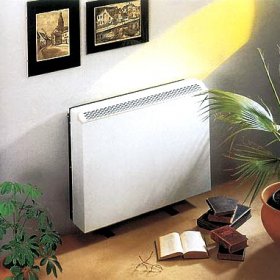
Analyzing the trends of the European heating equipment market, one can note the steadily increasing popularity of electric heating. And this is not at all surprising - the inhabitants of our country often make the same choice. Since gas was carried out, unfortunately, far from everywhere, liquid boilers could not become a "bestseller", and solar panels and other similar installations still cannot get out of the status of an "exotic experiment". This applies to private homes. In apartments, things are not encouraging: central heating often does not cope with the mission assigned to it, and the law does not always allow to refuse such “pleasure” and establish an autonomous system. Therefore, the purchase of electric heaters for many families is often the only acceptable opportunity not to freeze in the winter. But even here difficulties may arise, since it is not always easy to understand which type of devices it is better to give preference to. We authoritatively declare: electric heating convectors - practical, efficient, safe and unpretentious appliances - are uniquely reasonable and right choice.
Content
What is a convection process?
Surely each of you remembers from a school physics course that heated air tends to rise up. Together with the expansion, its density decreases - and the cold air layers manage to squeeze it out. This is precisely the principle of the formation of cyclones and winds in the atmosphere of our planet: warmed air masses rush up over certain parts of the surface, and air flows from colder regions take their place.
A similar process, but on a much more modest scale, can occur in enclosed spaces. His name is convection. Effectively manage it in order to heat houses, offices and apartments and convectors are called on.
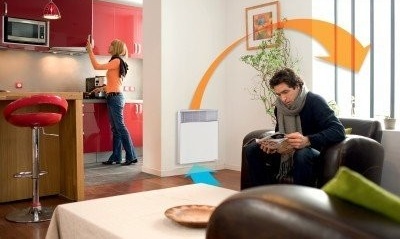
An electric convector is a heater operating on the principle of convection: a type of heat transfer in which energy is transmitted by streams and jets
The device and principle of operation of such a heater
All electric convectors have an extremely simple design. In fact, they consist of two main parts - the housing and the heating element. Holes for "drawing in" cold air are located in the lower part of the body, for the release of heated - in the upper. Inside the housing, as a rule, in its lower part, there is a heating element.
The heating element "processes" the air that is currently between the walls of the housing, after which the air rushes up. Outlets are usually located at a slight angle relative to the vertical. The heated air mass moves upward along a parabolic trajectory, and gradually cools down, falls to the floor. The cycle repeats.
An electric convector distributes air throughout the room evenly and silently. Some models are equipped with fans - to speed up the heating process. The truth about the noiselessness with such equipment is out of the question.
A certain role in the popularity of convectors is also played by the temperature of the walls of the heater body, which, as a rule, does not exceed 60 degrees. It is worth noting that this fact compares them favorably with oil installations, which are considered to be traumatic from the point of view of the risk of burns (in particular) by children and animals.
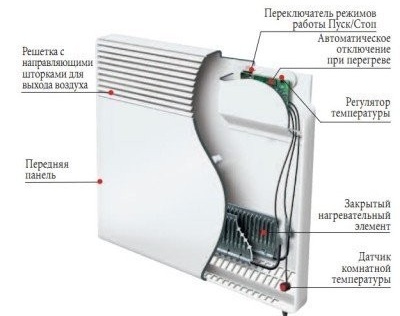
The electric heating convector is arranged quite simply: under the flat-rectangular housing there is a heating element and controls for the operation of the unit
Attention to the heating element (TEN)
Electric convectors use three types of heating elements:
- needle;
- tubular with aluminum fins;
- monolithic.
The needles are a thin dielectric plate on which a chrome-nickel heating thread is installed (coated with an insulating varnish), forming loops on both sides of it. They heat up and cool down almost instantly. Convection in devices created "on the basis" of a needle heater is carried out mainly due to the design of the housing.
Due to the fact that the varnished thread is practically not protected from moisture in any way, the use of equipment with such a heating element in wet rooms is strongly discouraged. The main advantage of such devices can undoubtedly be called their price, however, the durability of the equipment is doubtful. In general, in practice, needle heating elements are rarely used in modern electroconvectors; but if you encounter an assembly with such a “filling” in the selection process, you can safely pass by.
A tubular heating element (TEN) is a steel tube with a nichrome thread installed in it and filled with a special heat-conducting backfill insulator. Aluminum ribs are fixed on this tube - it provides effective heat transfer and enhances convection. The tubular heating element heats up significantly less than the needle, it is more durable. Many models of units with heating elements are made in a spray-proof design and can be successfully used in bathrooms. But, unfortunately, such equipment is not without its drawbacks: due to the difference in the thermal expansion of the tube and fins, the operation of the device may be accompanied by sounds resembling crackling.
Convectors with monolithic heating elements are absolutely silent, since the heater body is solid; ribs are an integral part of it. Such devices operate with minimal heat loss and are very highly efficient.
We recommend stopping your choice on electric convectors with tubular or monolithic (ideal option) heating elements.
Where is it better to install a convector?
Before choosing an electric heating convector, it is necessary to determine its location. Devices can be installed on the walls (using the special mounts included in the kit) or operated mobile, freely moving around the room or from room to room. If you are only interested in the second option, pay attention to whether there are wheels in the delivery kit so that you don’t rush around the city in search of suitable “fittings”.
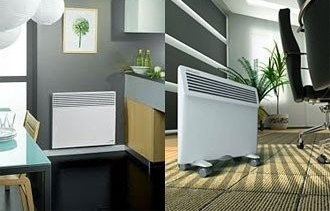
The electric convector can be installed on the wall or on the floor - depending on the personal wishes of the owners, the nuances associated with the organization of heating (permanent or auxiliary heating is necessary), interior features
It is worth paying attention to the overall dimensions of the convector when buying. Devices can have different heights and widths and look completely different in the interior - keep this in mind. The most “elegant” mini-skirting models have a height of only 15 centimeters!
How much power to buy the device?
The average power selection of an electric heating convector can be made according to this formula - 1 kW for every 10 square meters of area, provided that the wall height is not more than 2.7 meters. If this figure is greater, an additional 10% of power will be required for each additional 10 centimeters of height.
You should also take into account such moments (if heating by convectors is the main one):
- High-quality heating of convectors requires as much as indoor windows.
- Corner rooms, rooms above a cold basement or with a large glazing area definitely require equipment with a sufficient supply of power.
These calculations should be enough for a preliminary estimate. You can check with the consultants in the store for more details.
Types and features of temperature regulators
For maintaining the desired temperature in the design of the convector meets the thermostat, which can have mechanical or electronic control. A mechanical thermostat reduces the cost of the design, but at the same time introduces some inconvenience to the use of the device, in particular:
- poorly withstands temperature conditions;
- consumes more electricity;
- accompanies its work with characteristic clicks when turning it on and off, which can be a very annoying factor.
The electronic thermostat wins significantly against the background of a mechanical, it:
- completely silent;
- maintains the set temperature value with the minimum error - in one tenth of a degree;
- within its capabilities, reduces energy consumption;
- makes it possible to carry out "climate control" remotely;
- It supports several operating modes - “comfort”, “economy”, “automatic”, “anti-freezing”.
Convectors with an electronic thermostat are more expensive than models with a mechanical one - but they are definitely worth it.
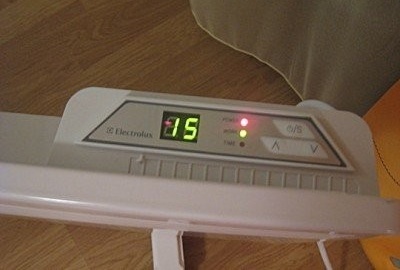
The presence of an electronic thermostat slightly increases the price of the device, but this is an advantage that you definitely should not refuse: a convector with such a “filling” works silently and as economically as possible
Frequently asked questions about electric convectors
Which convectors are more efficient - high or low?
The effectiveness of the device does not depend on its size, but on power. All kinds of “form factors” of the equipment are created, first of all, for the convenience of fitting it into various interiors.
Is it dangerous to leave the convector unattended?
Definitely not. If the electrical wiring in your home is capable of withstanding the aggregate power of simultaneously operating appliances, you need not worry.
Is it possible to use a convector as the main source of heating?
Generally yes. It all depends on the specific model of equipment and manufacturer's recommendations.
Is an electric convector a suitable choice for a children's room?
Quite. Among the products of most popular manufacturers there are units designed specifically for children's rooms - with a sturdy housing, streamlined shapes, without sharp corners. The holes in them are as small as possible, in principle, - all so that the child could not put anything inside.

Many modern manufacturers of electric heating convectors offer models of heating equipment adapted specifically for children's rooms - competently designed and as safe as possible.
Conclusions - what is it all the same to get?
So, what is the best electric convector? Ideally, the device should have:
- monolithic or tubular heating element;
- electronic thermostat;
- protection against overheating, freezing;
- “deactivation” sensor during rollover;
- accessories for different installation options - both floor and wall.
Optional, but very useful options can be a timer, remote control and display.
In conclusion, it is worth saying that electric convectors are a good choice for many reasons. Among their main advantages:
- No need for preparatory work. No projects, permits, special conditions. Bought, brought, installed, connected.
- Affordable cost. For 100-150 dollars you can buy a mega-unit.
- Excellent efficiency. Almost all the electricity consumed by the convector is converted into thermal energy.
Having approached the process of choosing an electric heating convector wisely, you are guaranteed to get a reliable unit that will heat you quality on long winter evenings. We wish you extremely pleasant and useful shopping!
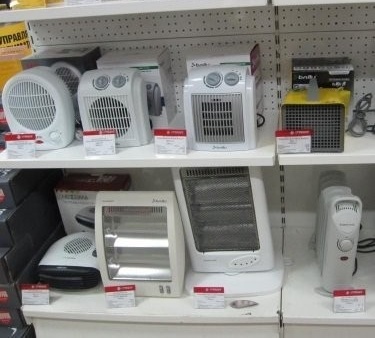
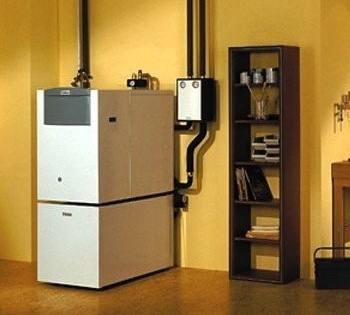
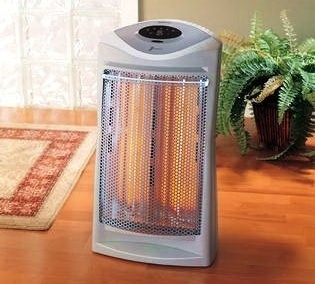
5 comments